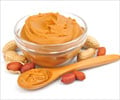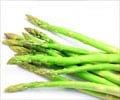Those who cautiously take time to read the long list of nutrients of a food label eat a balanced meal than those who don’t.

‘A greater proportion of nutrition-label users selected more fruits, vegetables and beans, and fewer potatoes and refined grains, compared with non-label users.’





"Research has often concluded that people who use nutrition labels eat better. But we don't necessarily talk about what better means," Ellison said. "Is it eating less food, or is it eating better food? This study looks at people's plates and considers both what they selected to eat and what they actually ate in an effort to determine which difference" - volume or quality - "is occurring."To examine the relationship between label use and food selection, servings and consumption, Ellison and co-author Mary J. Christoph of the University of Minnesota combined survey and photographic data of the lunch plates of college students at two different university dining halls.
Food selection, servings and consumption were assessed using digital photography, a method with strong reliability for validating portion sizes compared with weighing food and visual estimation.
"In terms of measuring and evaluating the plates, we had students who built their own plates because it was a self-serve dining environment," Ellison said.
"Diners were only eligible if they were just sitting down to eat. It couldn't be someone who was halfway through their meal, which would misrepresent what they were eating and skew the results."
Advertisement
The results indicate that a greater proportion of nutrition-label users selected more fruits, vegetables and beans, and fewer potatoes and refined grains, compared with non-label users. In addition, fewer label users selected fried foods and foods with added sugars, Ellison said.
Advertisement
Using digital photography also provided a more objective assessment of food selection, servings and consumption compared with self-reporting.
Participants were further surveyed on socio-demographic and behavioral variables such as gender, body mass index, exercise frequency and nutrition education to better assess the possible link between label use and food selection, servings and consumption, according to the paper.
Examining nutrition labels is often recommended by doctors and dietitians to improve food choices, but choice does not always translate to consumption. Furthermore, evidence on the effectiveness of labels is mixed, and few studies can identify how labels actually influence behavior, Ellison said.
"Previous research has focused on portion control for weight loss or weight management, generally eating less. But, more-recent research indicates this may not be the most effective message. By eating less, consumers may feel deprived, or even 'hangry,' which can make it difficult to sustain long-term dietary behaviors," she said.
Although the results show label users eat differently than non-users, the implications of the research suggest there may be a need for greater consumption of fruit, vegetables, beans, whole grains and low-fat dairy among both groups.
In addition to posting labels, Ellison said dining facilities may want to increase offerings of nutrient-dense foods (whole grains and vegetables, for example) or consider product reformulations that creatively incorporate these foods to encourage healthy eating behaviors.
But Ellison warned that the study's findings should still be cautiously interpreted, as the conclusions are based on only one meal.
Source-Eurekalert














